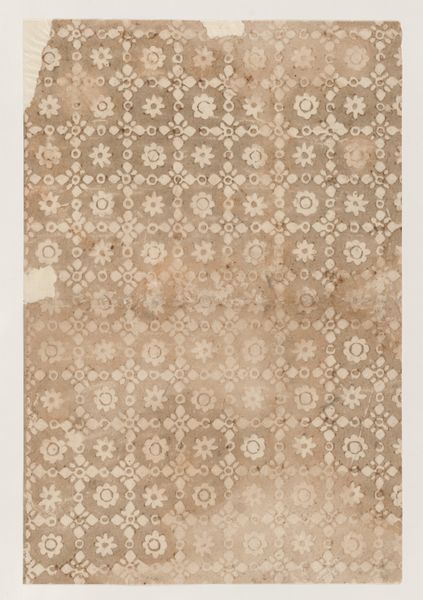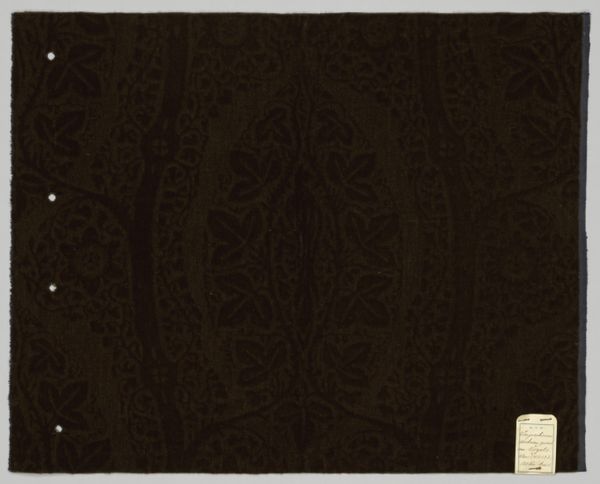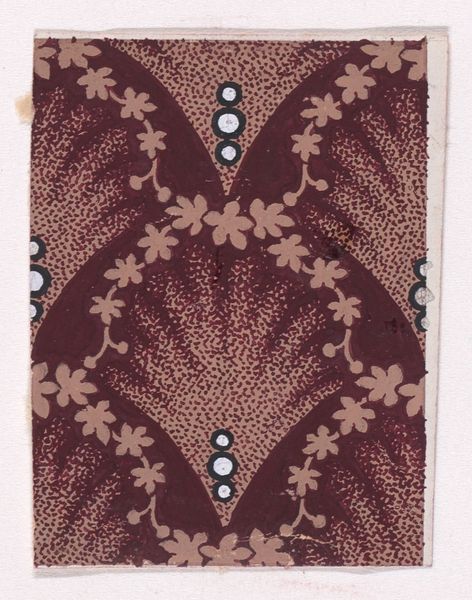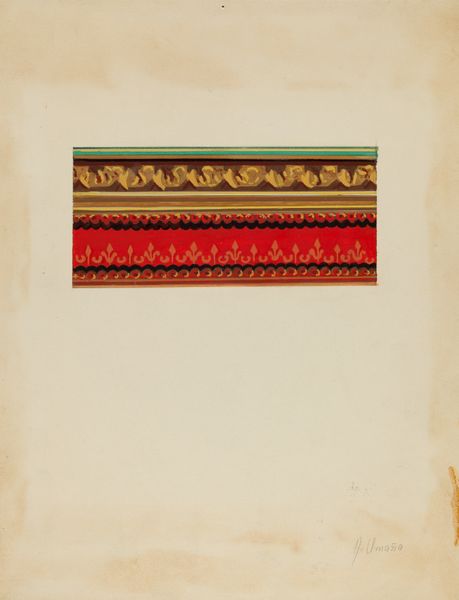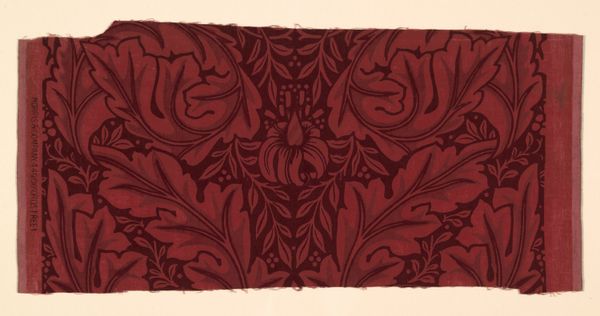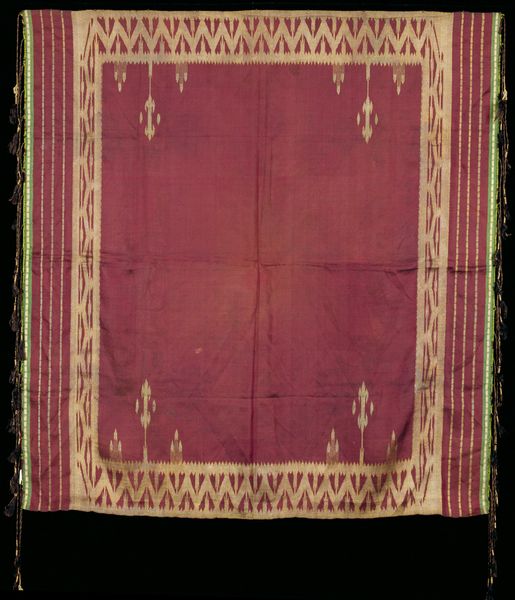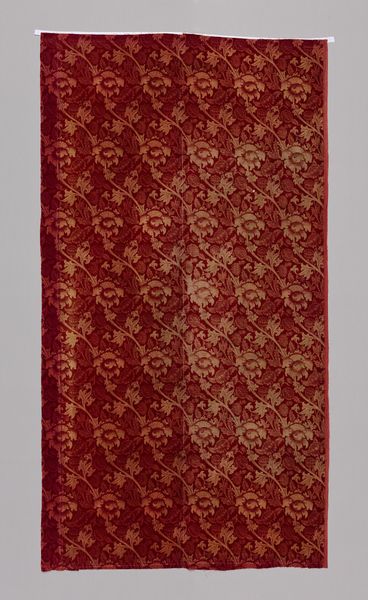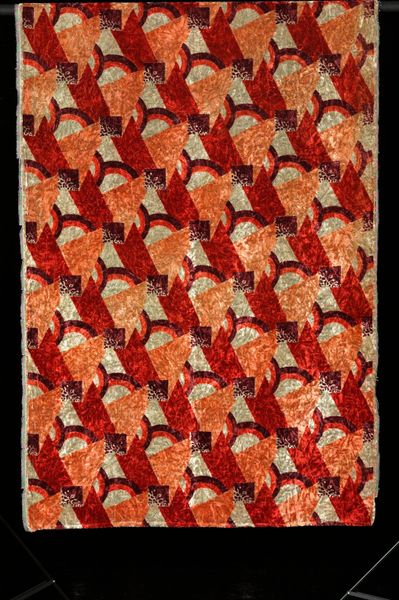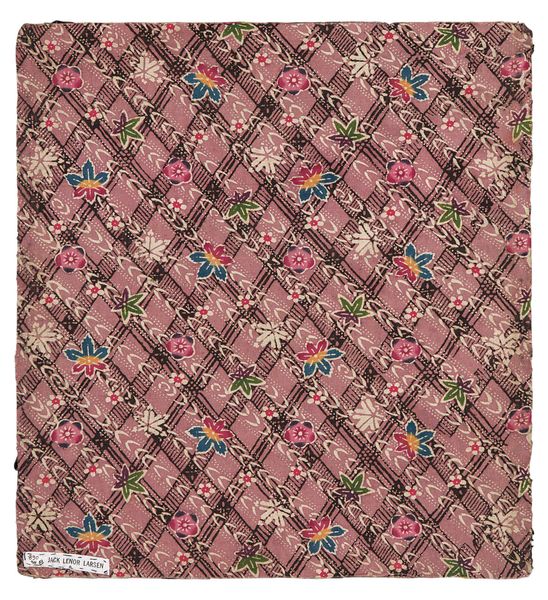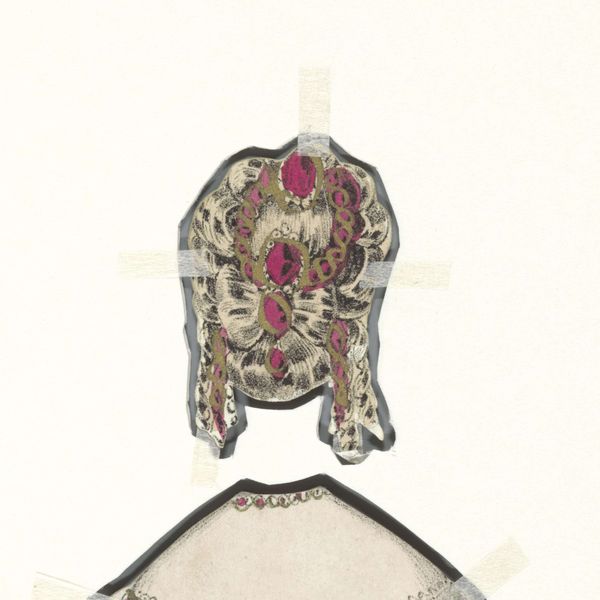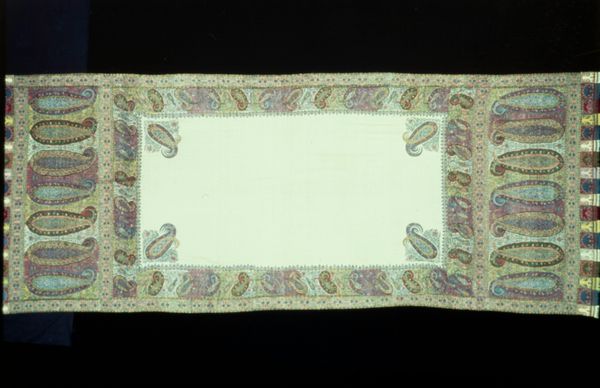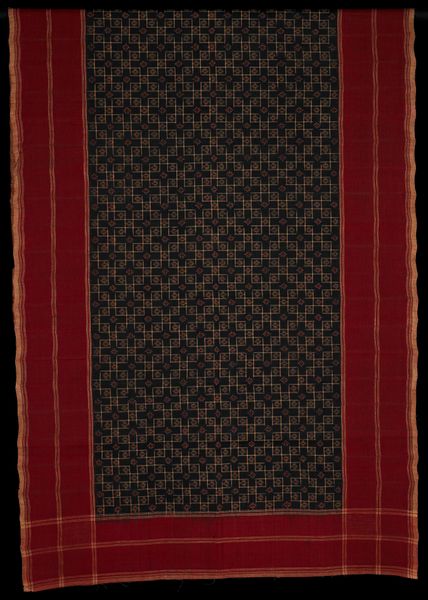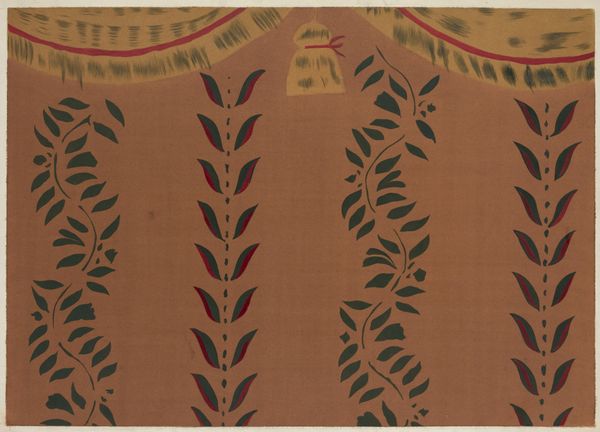
mixed-media, collage, textile
#
mixed-media
#
collage
#
pattern
#
textile
#
pop-art
#
pattern repetition
#
textile design
Copyright: Jim Dine,Fair Use
Curator: Looking at Jim Dine's "Throat" from 1965, I immediately feel a certain... discordance. The sharp reds and blacks against the pale green. It is quite striking! Editor: Discordance is the word. The work uses mixed media, a collage that feels like a ransom note made of fabrics and fleeting moments. Like visual poetry formed from cast-off parts. Curator: I agree. Let's start with the most recognizable element: the red bandana. A powerful symbol itself—rebellion, working class identity, even something a bit dangerous with it's Wild West associations. How do you interpret its role here? Editor: I think its juxtaposition with the monochrome photo, a portrait that appears so fragile—delicately positioned near a neck or throat—lends itself to themes of suppressed speech and maybe unspoken pain. The bandana, bold and brash, muffles the muted cry. Curator: Indeed. Consider how textile design, often dismissed as purely decorative, speaks volumes. Dine elevates the humble bandana, embedding coded meaning related to American workwear and, by 1965, anti-establishment sentiments of the younger generation. The visual dissonance suggests inner tension. Editor: Definitely inner tension—a collision of the individual and collective. A personal story choked by societal constraints represented so well through this patchwork of symbolic fragments! Like pieces to some internal, unknowable puzzle. Curator: It truly exemplifies Pop Art's focus on mass culture. It doesn't just represent popular culture, but uses it as the actual raw material of emotional, artistic expression. Editor: Yes, it's emotionally charged Pop Art. This is an evocative artwork and through it Dine explores suppressed desire, muffled cries of self, societal pressure, a world choking on expectations and what remains unsaid. It still manages to express such a unique personal perspective. Curator: Seeing Dine’s use of mixed media this way helps to decode its seemingly disparate elements and gives an artistic vision we won't soon forget. Editor: Absolutely. Each fragment serves its purpose—nothing wasted, all carefully chosen—creating a potent symbol of cultural experience that will have you rethinking our place in it!
Comments
No comments
Be the first to comment and join the conversation on the ultimate creative platform.
